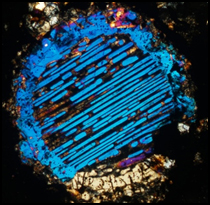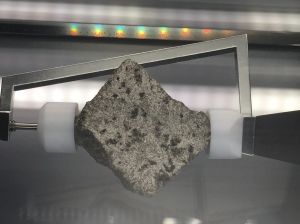This blog post was written by The Planetary Science team in the School of Earth and Environmental Sciences.
—————
Every three years our group applies to the Science and Technology Facilities Council (STFC) for funds to support our research. As part of this, we are asked to write a description of the research we plan to do that fits into 4000 characters (including spaces). This is what we wrote earlier this year.
We seek to understand how our solar system’s diverse environments formed and evolved, and how they operate today. We study samples that arrived at the Earth’s surface (e.g. meteorites) or were brought back by space missions. We also use observations from missions to other bodies in our solar system, from which we can determine compositions and infer their history of volcanic activity and impact cratering. We compare our data to models, such as those that simulate atmospheres, the cooling of asteroids and volcanic eruptions. These models are based on the same ideas we use to understand our planet. So as well as learning about our solar system, we test our ideas and gain insight into how the Earth’s environment responds to natural and man-made changes.

An example of a “barred olivine” chondrule from the Allende chondrite, taken in a polarizing microscope. The chondrule is about 1 mm across. Photo by Rhian Jones.
The compositions of the planets, including the Earth, were set as they formed in a disk of dust and gas that circled the growing sun 4.56 billion years ago. Clumps of dust grains were flash-heated into melt droplets that rapidly cooled: chondrules. Chondrule formation removed species that are driven off by heat (“volatiles”, like water). By making “chondrules” in the lab and comparing them to meteorite samples we can understand the composition of the disk and try to identify the heating mechanism (lightning, shock waves, impacts). The first asteroids – planetesimals – were formed from chondrules and other grains, some of which had never been hot. Fast-decaying radioactivity heated planetesimals, and as planetesimals cooled they were bombarded until the disk had dissipated – this led to more volatile loss. By studying meteorites from these planetesimals we will track the history of heating and cooling and impact processing to understand the starting compositions of planets, to characterise the impacts that shaped the early solar system, and to learn whether radioactivity was equally distributed in the disk or shows evidence of having been introduced from a nearby star as the solar system was forming.
Some meteorites are rich in volatiles. We seek to learn how their volatile content evolved, and test whether they may represent a source that replenished the planets. We also test minute particles of dust that float down through our atmosphere to see if they sample another source, such as comets. We study whether microbes can live on carbon-rich material in some meteorites, and so whether this material could serve as fuel for life beyond Earth.

Moon rock! An Apollo 15 basalt (15555). Image: Dayl Martin
Since the planets formed, their crusts have been modified by impacts, by volcanic activity, and by water flows. Impacts provide a source of heat that can change the structures of rocks – some enigmatic rocks on the Moon offer the chance to study how this occurs and learn about a major process in the evolution of planetary crusts across the solar system. Lunar volcanic activity is evident in the volcanic pyroclastic deposits that now drape the surface around volcanic vents. Using images of these volcanic centres, and the structure of volcanic rocks brought back from the Moon, we can find out how rapidly the material was blasted out of the lunar interior. Since expanding gases power such eruptions, this in turn provides insights into the concentration of volatiles inside the Moon. We are examining a recently discovered Martian meteorite that appears to be multiple fragments of different ages assembled by an impact. From this we can learn how the composition of the Martian surface has changed over time, and how this has affected its atmosphere.
Planetary atmospheres provide an exciting opportunity to test the ideas we use to understand our own weather and climate. The Martian surface shows traces of a time 4 billion years ago when it had a climate very like the Earth, we study how clouds would form and lead to precipitation in this environment. On Saturn, we can test our understanding of how a planet’s spin interacts with its atmosphere by modelling the formation of hexagonal cloud structures around its North Pole.

